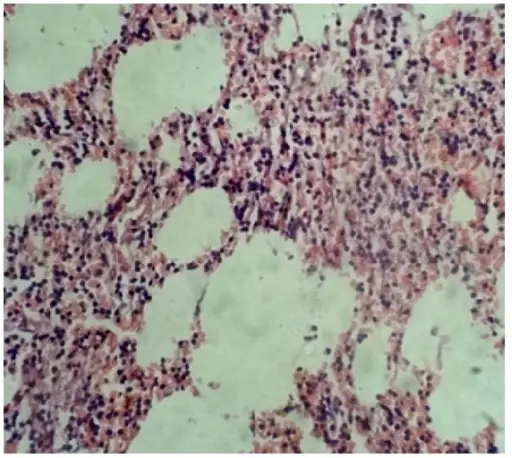Adrenal myelolipomas are rare benign neoplasms composed of mature adipose tissue and variable amounts of hematopoietic elements.
What is the Pathology of Adrenal Myelolipomas?
The pathology of adrenal myelolipomas is:
-Etiology: The cause of adrenal myelolipomas are adrenocortical tumors and congenital adrenal hyperplasia.
-Genes involved: NA.
-Pathogenesis: The sequence of events that lead to adrenal myelolipomas is unclear, although it is hypothesized to develop from mesenchymal cell metaplasia or as a result of overstimulation by increased corticotropin (ACTH) secretion.
-Morphology: The morphology associated with adrenal myelolipomas shows a well-circumscribed nonhomogeneous macroscopic fat-containing adrenal mass with low attenuation on unenhanced imaging and no enhancement with contrast medium. The myelolipomas can contain different proportions of fat and myeloid tissue.
-Histology: The histology associated with adrenal myelolipomas shows the presence of mature adipose tissue intermixed with hematopoietic elements, including megakaryocytes. The appearance of an adrenal myelolipoma can be hyperechoic or hypoechoic, depending on the predominance of fat or myeloid cells.
How do Adrenal Myelolipomas Present?
Patients with adrenal myelolipomas typically are either male or female present at the age range of fifth and sixth decade of life. The symptoms, features, and clinical findings associated with adrenal myelolipomas include relatively slowly growing tumors which size varies from several millimeters to more than 30 cm, and tumors exceeding 10 cm in diameter are called giant myelolipomas. Symptoms include nonspecific abdominal pain, constipation, vomiting, hematuria, or renovascular hypertension.
How are Adrenal Myelolipomas Diagnosed?
Adrenal myelolipomas are diagnosed by ultrasonography, CT, and magnetic resonance imaging. Biopsy is confirmatory.
How are Adrenal Myelolipomas Treated?
Adrenal myelolipomas are treated with adrenalectomy that includes laparoscopic adrenalectomy, open adrenalectomy, and laparoscopic adrenalectomy.
What is the Prognosis of Adrenal Myelolipomas?
The prognosis of adrenal myelolipomas is good.



